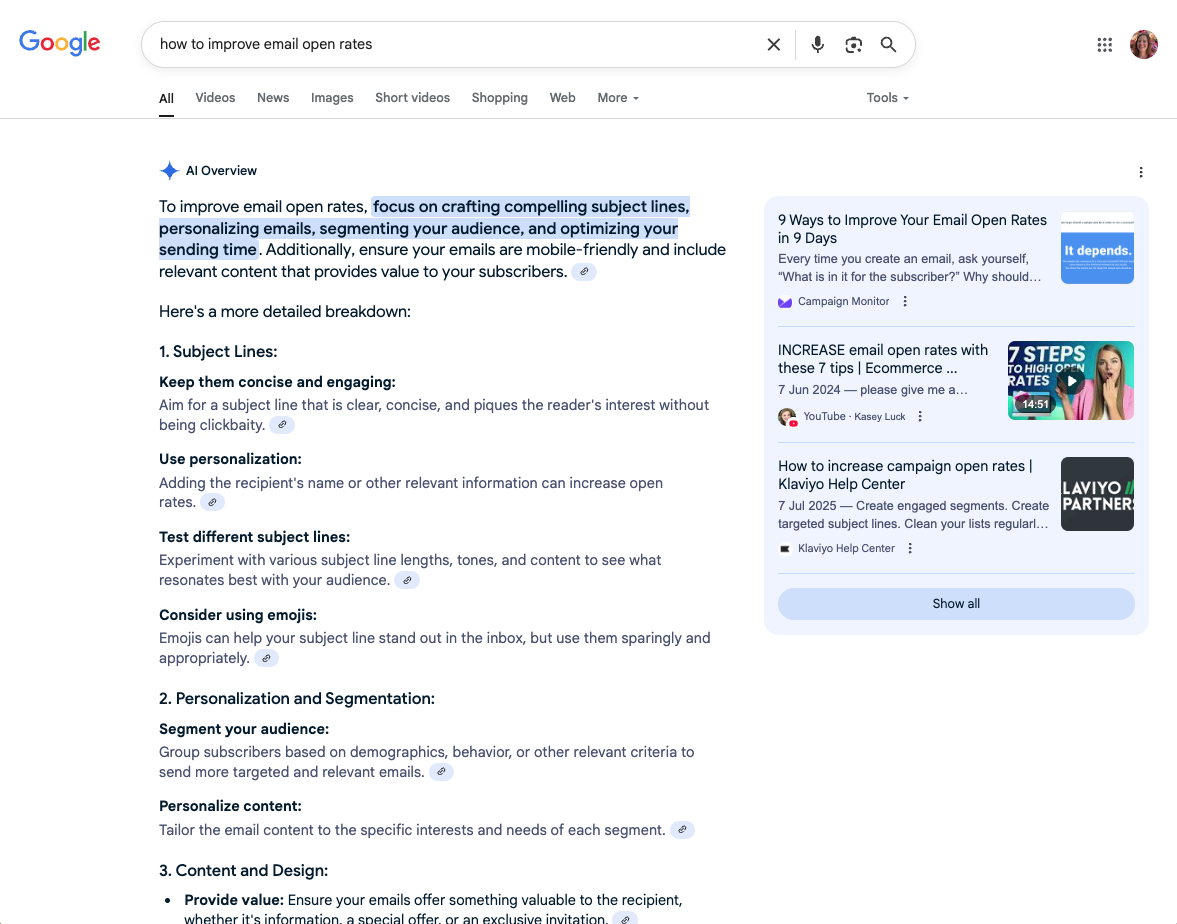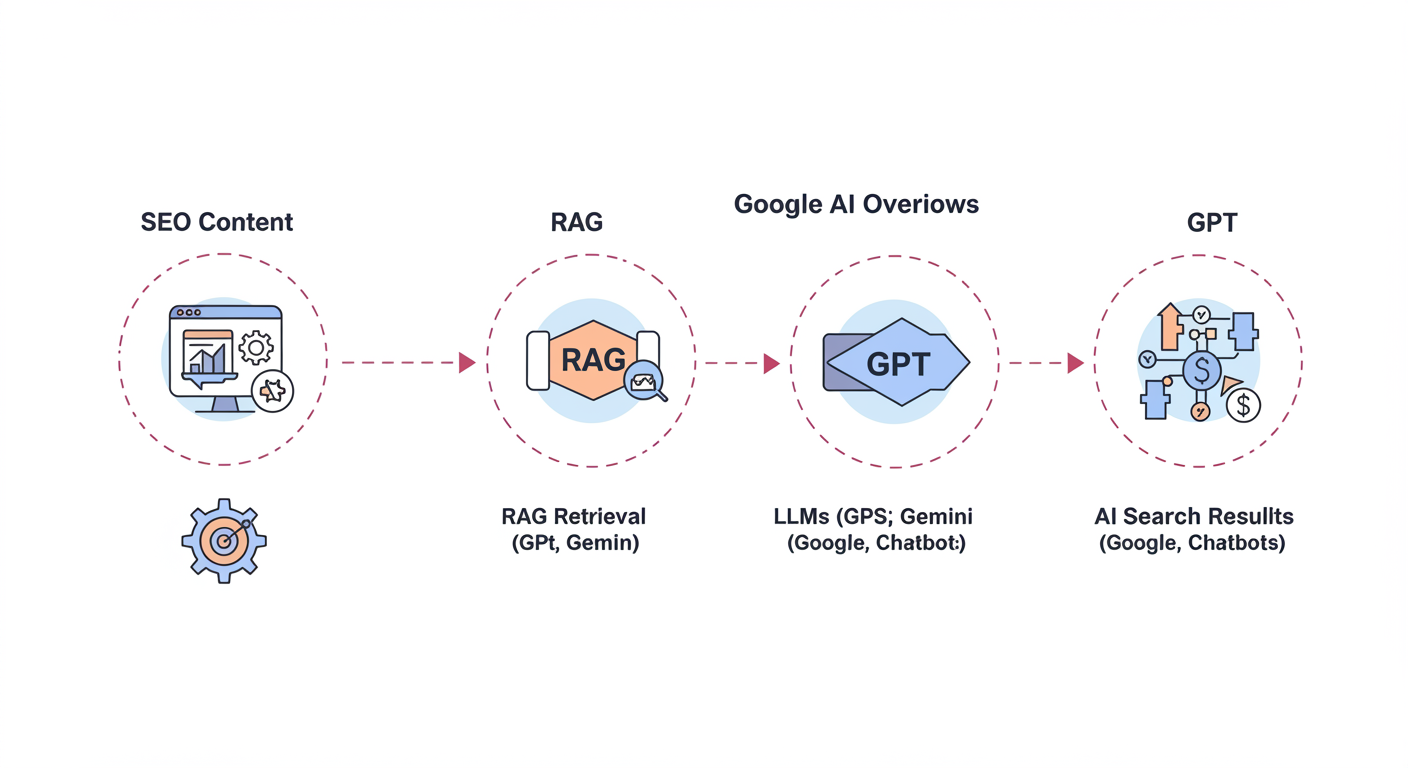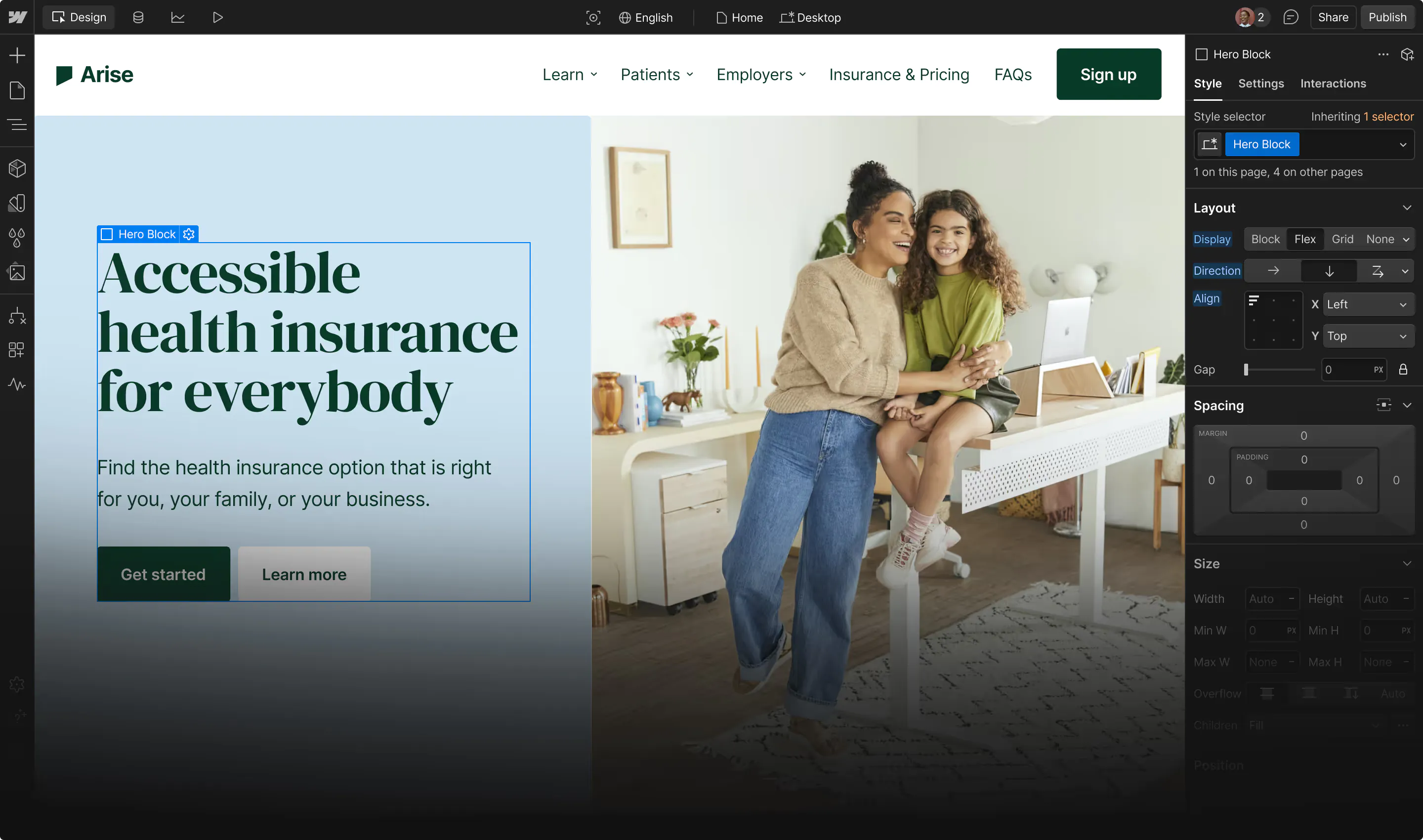The rules of SEO have changed, and the playbook you've relied on for years might no longer work.
The rise of generative AI is changing how people search online: today, 55% of people use AI search for general research. Even for users searching on Google and other search engines, they’re now getting answers directly on the webpage without clicking through to your website.
As a result, marketers must pivot their strategy to meet their users where they're searching, namely search and LLMs. But to understand this space effectively requires navigating a whole new world of AI jargon — AIO, GEO, RAG — which can feel overwhelming.
In this article, we'll give you the lowdown on what each of these terms actually means, how they work together, and how to adapt your marketing strategy for an AI-first search world.
The foundation of SEO
AI search didn't emerge from thin air; it's grounded in the same foundation as SEO. Before we explore the new landscape, let's anchor ourselves in the concepts you already know.
Search engine optimization (SEO)
SEO is the science of improving your content to rank higher in search engine results.
The traditional SEO playbook was relatively straightforward: research the terms your audience searches for, create content targeting those keywords, and convince other websites to link to yours. Search engines like Google crawl your site, index your content, and determine your ranking based on relevance and authority signals.
Search engine results page (SERP)
The SERP is exactly what it sounds like — the page users see after entering a search query. For years, SERPs followed a predictable pattern: paid ads at the top, followed by organic results displayed as blue links, often with featured snippets or local business listings interspersed. As a result, users were trained to scan results, evaluate options, and click through to get results. Marketers, on the other hand, optimized for visibility and competed for the top positions since they drove the most traffic.
But as AI changes how search engines understand and rank content, the future of SEO is shifting. Today's results pages increasingly feature AI-generated content that answers questions directly, without requiring users to click through to a website.
Understanding LLMs and what users see
AI systems are reading your content and using it to answer questions directly on search results pages. This shift is fundamentally changing what users see when they search and how you need to optimize your content.
Large Language Model (LLM)
An LLM is an AI system trained on vast amounts of text to understand and generate human-like responses. Think of it as a computer program that has read billions of web pages, articles, and forums, then learned to predict what words should come next in any given context.
LLMs like GPT-4, Claude, and Gemini understand context, nuance, and intent in ways that traditional keyword-matching never could. They can receive a question like "How do I measure the ROI of my content marketing efforts?" and generate a thoughtful, contextual response rather than just returning a list of links.
For marketers, your content and landing pages aren't just competing to rank for specific keywords anymore. They're competing to be understood, cited, and referenced by AI systems that can read and digest your content the way a human would. This means you need to optimize for both human readers and AI understanding.
AI Overviews (AIO)
AI Overviews are Google's AI-powered summaries that appear at the top of search results, providing comprehensive answers to user queries before displaying traditional search engine results. When you search for something like "how to improve email open rates," you might see a detailed response that synthesizes information from multiple marketing websites into a single, coherent answer.
This often eliminates the need for users to click through to a website, known as zero-click search. While featured snippets and knowledge panels have provided direct answers for years, AIOs have made zero-click experiences far more common and sophisticated.

The system works by retrieving relevant information from across the web and then using LLMs to synthesize a cohesive summary. Rather than copying from a single source, it draws on multiple authoritative materials to generate original, natural-sounding explanations. Users get instant, comprehensive answers, and the AI does the heavy lifting of research and synthesis for them.
For marketers, this creates a complex new landscape. Even when your content serves as a source for AI-generated answers, users may never visit your website, leading to decreased organic traffic despite your content's influence. Traditional metrics like click-through rates and direct conversions become less reliable indicators of content performance.
However, being consistently cited by AI systems can establish your brand as a trusted authority. Users see your brand associated with helpful, accurate information, building recognition and trust over time — even if it doesn't immediately show up in traffic metrics. With AI search, being the source that AI systems trust and reference might be more valuable than ranking #1 for a specific keyword.
The new optimization strategies
While traditional SEO principles still matter, marketers must layer on strategies specifically designed for AI-powered search experiences.
Conversational search
Conversational search represents the shift from keyword-based queries to natural language questions, making search more intuitive. Instead of typing "email marketing best practices," users now ask, "What's the most effective way to write emails that people actually want to read?"
Instead of creating content around keywords, marketers need to create content that directly answers the questions people actually ask AI systems and voice assistants. Consider the difference between optimizing for "B2B lead generation" versus "How do I get more qualified leads for my B2B business?"
Generative engine optimization (GEO)
Generative engine optimization is the process of optimizing content for AI-powered search engines that generate answers rather than just returning links. Unlike traditional search, where you optimize to rank first, you're optimizing to be cited and referenced by AI systems.
AI systems are becoming sophisticated at identifying authoritative sources, and they're more likely to reference content that demonstrates genuine knowledge and expertise. To match this new paradigm shift, here are some tactics to consider:
- Focus on depth and accuracy of content as
- Add structured data markup to help AI systems understand your content
- Build logical information architecture that’s easy to follow
- Create clear topic sections and descriptive headers
Answer engine optimization (AEO)
Answer engine optimization focuses on writing content so that it's chosen as the source for AI-generated answers. While often used interchangeably with GEO, AEO is more narrowly focused on creating content that directly answers specific questions in a format that AI systems can easily extract and use.
Instead of trying to rank first for broad terms like "content marketing," you might focus on being the definitive source for specific questions, such as "How often should I post on LinkedIn for maximum engagement?" This requires identifying the exact questions your audience asks and creating content that provides clear, actionable answers.
AEO content tends to be more structured and direct than traditional blog posts. Think FAQ formats, step-by-step guides, and content that gets straight to the point. You're creating resources that AI systems can confidently reference when generating answers.
How AI’s technical foundation works
Understanding the technology behind AI search helps you optimize more effectively. You don't need to become a data scientist, but grasping these core concepts will make you a more strategic marketer.
Retrieval-augmented generation (RAG)
Retrieval-augmented generation combines information retrieval with text generation to create comprehensive answers. Think of it as a two-step process: first, the AI system searches for relevant information across the web, then it uses that information to generate a cohesive response.
For example, when someone searches for "best practices for email subject lines," the AI system doesn't just rely on its training data from months or years ago. Instead, it actively searches for current information about email marketing, finds relevant articles and studies, and then synthesizes that fresh information into a comprehensive answer.
For marketers, this means that the better your content is at being found and understood during the retrieval process, the more likely it is to be incorporated into AI-generated answers. Further, content that's rambling, unclear, or poorly organized is less likely to be selected during the retrieval phase or used effectively during generation.
Therefore, your website and content must be both discoverable during retrieval and usable during generation. This involves both technical optimization, such as proper markup and clear headings, and editorial choices, including writing clear, factual statements that AI systems can confidently reference.
Model Context Protocol (MCP)
Model Context Protocol is a framework that enables AI models to access and use external data sources in real-time. While RAG typically works with web content, a MCP allows AI systems to connect directly with databases, APIs, and other structured data sources.
If your company has databases of product information, customer data, or industry insights, the MCP could potentially allow AI systems to access that information directly when generating answers. This could give you a competitive advantage in AI search results by providing more current and comprehensive information than competitors who rely only on web content. Webflow’s MCP server, for example, has tools that enable AI agents to access real-time information about your sites, collections, and other objects, enabling more accurate and contextual code suggestions and troubleshooting.

What LLM search means for your marketing strategy
Your marketing strategy must account for human readers who click through to your website and AI systems that might reference your content. Here are some practical tips to account for this shift:
- Audit your existing content for AI-friendliness and conversational queries. Review your top-performing content and ask yourself: Could an AI system easily extract key information from this? Are your main points clearly stated and well-supported? Does your content answer the actual questions your audience asks, or just target keywords?
- Restructure your content to better serve both human readers and AI systems. This might mean adding FAQ sections, providing more direct answers to common questions, and reorganizing information to be more scannable. The goal is to make your expertise as accessible as possible to AI systems that want authoritative sources.
- Rethink success from immediate conversion metrics to your broader influence in your industry. Move from traffic-focused SEO strategies to authority-focused content strategies. While website traffic remains important, building authority with AI systems that consistently reference your content may be more valuable in the long run.
The marketers who adapt quickly to AI search will maintain and grow their influence, while those who stick to outdated approaches will find themselves increasingly invisible to their audience.


















.jpeg)
Architecting for AI
Join us for practical tips on how to build websites and workflows that win in an AI-powered world.
































